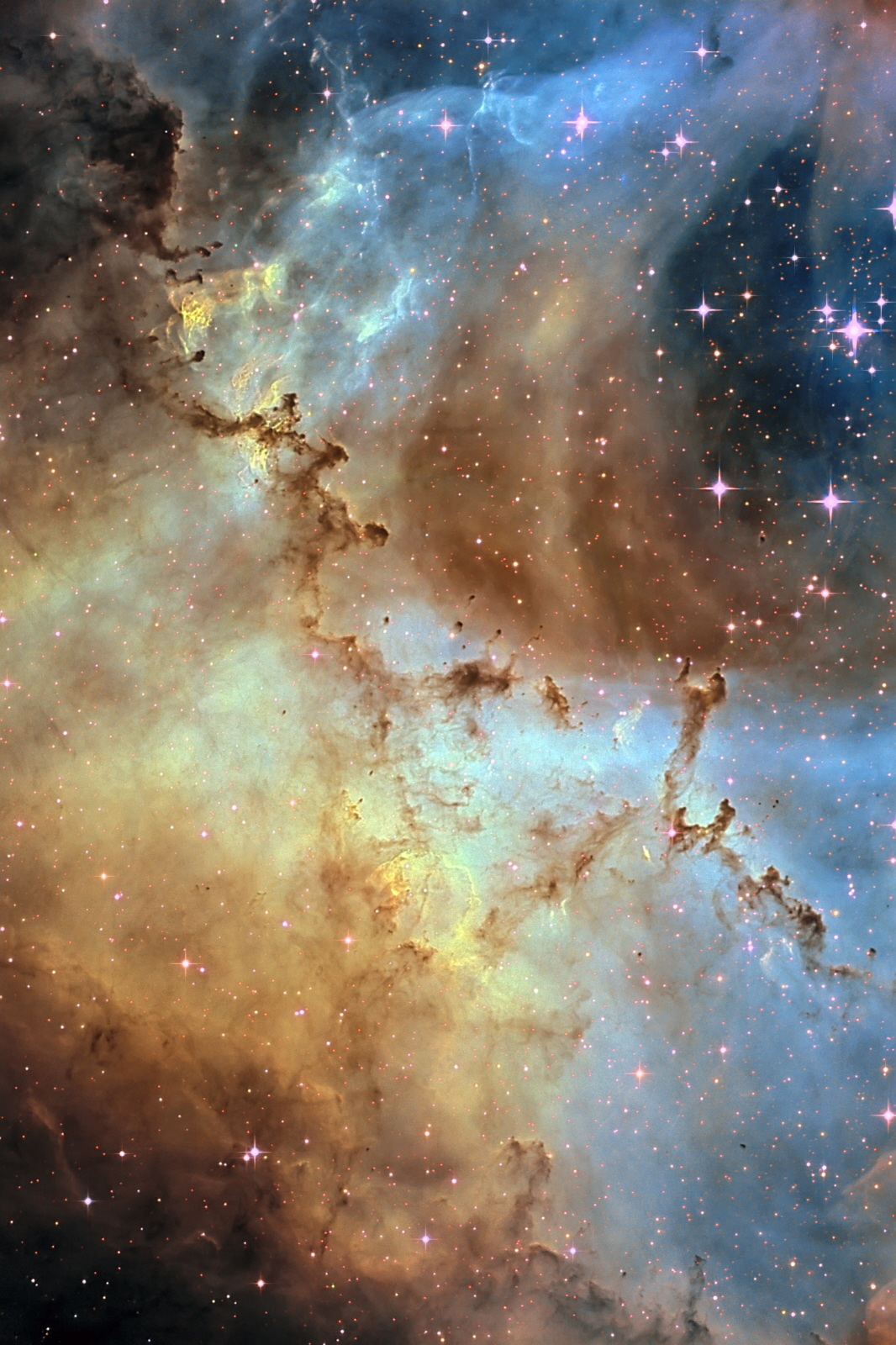
towards the top right of the image you can see many bright stars with the same apparent color, crammed together in a cluster. these stars formed all at once and very recently from all the dense gas in the area. when those stars initially sparked and started to burn hydrogen gas in their centers, they started to send a consistent flurry of light particles, photons, out in every direction. as the photons from the brightest and hottest stars started to reach the gas that surrounds the newly-formed stars, the gas began to glow excitedly from the extra energy it gained from the photons! different types of gas glow with different temperatures that astronomers can isolate by using filters during their telescopic observations. here, the red shade is sulfur, the green is hygrogen and the blue is oxygen. individual exposures are taken with each filter, colors are digitally assigned, and then all images are added together to form this beautiful composite!
the above image focuses on a portion of the rosetta nebula, shown in its entirety below. the full gas cloud covers an area on the sky big enough to fit 5 full moons. you can clearly see the stellar cluster in the center of the image.

the open star cluster (NGC 2244) was discovered in 1690 by english astronomer john flamsteed. the diffuse and much fainter nebula around the star cluster wasnt discovered until later. The rosetta nebula is about 50 light-years across and 4,500 light years away. star formation continues to occur in this nebula of gas and dust, so it should shine brightly for many millions of years to come.











No comments:
Post a Comment